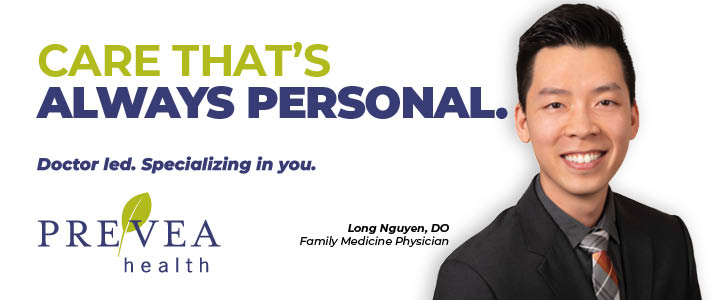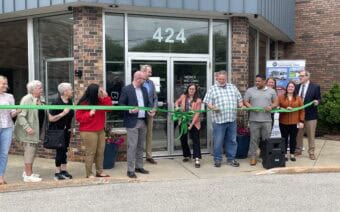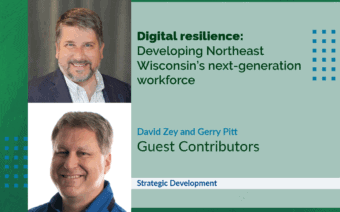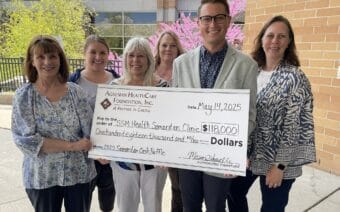
September 8, 2022
NORTHEAST WISCONSIN – If you’ve ever visited Bellin Health’s website, then you may have met “Jules” – the chatbot powered by artificial intelligence (AI) that pops up in the corner of your screen offering to help.
Jules can do more than find you a doctor or a phone number.
If you’re hurt or ill, he’ll ask questions – in English or Spanish – to get to the root of what’s bothering you.
You may find out it’s nothing an ice pack or a couple Benadryl can’t fix, in which case you’ve saved yourself a trip to the ER and a bill.
Bellin’s Jules is a peek into the world of AI and how healthcare entities are tapping into it to further support its patients and staff.
Investing in efficiency
Artificial intelligence can serve multiple purposes – monitor social media sites for danger, help runners train for a marathon, book vacations, predict catastrophes and mine for Bitcoin.
Healthcare industry officials are now looking to artificial intelligence as an additional tool to help enhance patient access, experience and outcomes, as well as streamline behind-the-scenes tasks.
“AI is defined as the ability of a digital computer or computer-controlled robot to perform tasks commonly associated with intelligent beings,” said Jim Sweeney, a spokesperson for Qventus, the firm ThedaCare in Neenah is teaming up with for its new AI-powered software.
Mark Thompson, chief financial officer and COO for ThedaCare, said plans at ThedaCare include automated discharge planning for patients, operating room scheduling, systemwide patient flow and other operational activities.
“Care operations automation solutions can help relieve some of the prime operational and financial pressures facing hospitals and health systems,” he said.
Mudit Garg, co-founder and CEO of Qventus, said the technology runs in real time and communicates with electronic health records (EHR).
“It uses AI and machine learning to identify issues, applies automation and behavioral science to orchestrate actions and uses statistical analytics to help manage accountability and performance,” he said.
Garg said though many hospitals use electronic medical records, staff end up doing many tasks manually, which can lead to inefficiencies, with some hospitals not not living up to their potential and fewer patients being served.
“The shortcomings of the manual processes were exposed even more by the COVID-19 pandemic and recent hospital staffing shortages across the country,” he said.
Garg said as consumers, patients expect healthcare to work like everything else in their personal and professional lives.
“Not only do they want to be able to access everything at their fingertips – but they also expect everything to run in a highly efficient manner,” he said.
Garg said many health networks have introduced consumer-friendly updates, like telehealth, apps and web portals, but behind-the-scenes tasks have yet to be revamped.
?

Mudit Garg is the co-founder and CEO of Qventus. Submitted Photo
“Most perioperative management software isn’t sophisticated enough to coordinate the steps or drive the behaviors needed to maximize scheduling lead times and strategically fill white space,” he said.
Thompson said staff and care teams are expected to benefit from Qventus software with less manual work, fewer back-and-forth phone calls and an improved ability to consistently coordinate safe, on-time discharges.
Garg said this can reduce phone calls and manual work by 50%.
“Instead of using phone calls, faxes and manually transcribing information in the electronic health record system, surgeon schedulers can view available time without logging onto the EHR and then submit case request information directly… to the EHR,” he said.
Garg said AI mimics autopilot capabilities – learning health systems’ patterns to predict a patient’s approximate departure time.
“(It) auto-populates the estimated discharge date directly into the electronic health record and … updates the estimated discharge date throughout the stay… based on real-time data,” he said. “It also prompts the care team by suggesting opportunities to move the estimated discharge date earlier as clinical conditions evolve – like an autopilot.”
The potential future
Several years ago, before the world had ever heard of COVID-19, Laura Hieb, Bellin Health’s chief nursing officer and senior vice president, said she participated in a group exercise of envisioning the future, or futuring.
Hieb said the group was challenged to look for signs around them that presaged coming developments.
“We did a lot of work on where we are with digital technology and how it relates to healthcare, what are the signals out there that are going to change how we deliver care as far as our tools and technology,” she said.
Heib said COVID accelerated technology in healthcare, with many of her colleagues having to redesign care and implement the use of technology.
“I think there’s a (potential) for AI to be a great supplement to the work we do in helping us be aware of who’s going to have health conditions or concerns that need to be looked at,” she said.
Heib said Bellin uses AI to some extent in medical imaging, as it can cue up things that should be looked at sooner because they screen out all possible problems.
“I just know that AI is here,” she said. “We’re starting to see it introduced more. I think we have to figure out how we interact with it and utilize it.”
TitletownTech Managing Director Jill Enos said the venture capital company (a partnership between the Green Bay Packers and Microsoft) invests in young, technology-driven startups with potential for high growth, and one of its areas of interest is digital health.
“Digital Health is an important category for investment because of the tremendous impact data and technology have on improving healthcare delivery and outcomes,” Enos said.
Some of those startups Enos said include: Springbok Analytics, whose AI-powered platform converts MRI images into 3D so injuries to muscles can be more closely examined; another, Oculogica, makes a concussion diagnostic tool, EyeBox, which studies eye movements of people with head injuries and uses AI to diagnose in about four minutes.

?TitletownTech Managing Director Jill Enos.
Hieb said the workforce is changing, and AI plays a big part in that.
“(We have to figure out) where are there places we can automate things, use technology, use AI, so we’re helping the right people with the right resources at the right time,” she said. “I think that’s where our opportunity really lies.”
 Door County restaurant centered around farm-to-table ethics
Door County restaurant centered around farm-to-table ethics Multi-generational tree farm kicks off holiday season
Multi-generational tree farm kicks off holiday season







